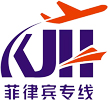The development of logistics management has experienced three levels: distribution management, logistics management and supply chain management. Logistics management originated from the storage and transportation mode and technology developed by the army in the Second World War.
After the war, these technologies were widely used in industry, which greatly improved the operation efficiency of enterprises and won more customers for enterprises. At that time, the logistics management mainly focused on the distribution part of the enterprise, that is, how to quickly and efficiently deliver the products to customers through the distribution center after the finished products are produced, and maintain the minimum inventory as much as p o ssible. The American Logistics Management Association was then called the physical distribution management association, while the Canadian supply chain and logistics management association was called the Canadian Physical Distribution Management Association.
In this initial stage, logistics management only passively caters to the needs of customers after a given number of finished products are produced, transports the products to the place designated by customers, optimizes the use of resources in the field of transportation, and reasonably sets the inventory of each distribution center. To be exact, logistics management did not really appear at this stage, but only transportation management, warehousing management and inventory management. The p o sition of logistics manager did not exist at that time, but only transportation manager or warehouse manager.
Logistics management in the modern sense appeared in the 1980s. People find that it is very effective to observe, analyze and solve problems in enterprise management by using cross functional process management. By analyzing the whole circulation process of materials from raw materials to factories, through each workstation on the production line, producing finished products, then transported to the distribution center and finally delivered to customers, enterprises can eliminate many local optimization behaviors that seem to be efficient but actually reduce the overall efficiency. For another example, as an independent functional department, the Ministry of transport always tries to reduce its transportation cost, but if it delivers an order that must be accelerated by sea instead of air, it saves freight, but loses customers, resulting in overall failure. Therefore, the traditional vertical function management is no longer suitable for modern large-scale industrial production, while the horizontal logistics management can comprehensively manage the different functions in each process in order to achieve the overall optimal synergy.
At this stage, the scope of logistics management is extended to demand forecasting, procurement, production planning, inventory management, distribution and customer service in addition to transportation, so as to systematically manage the operation of the enterprise and maximize the overall benefits.






